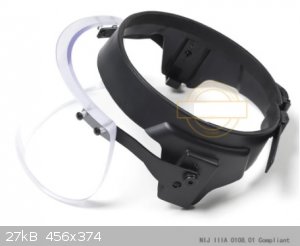
Fyndium - 1-10-2021 at 02:00
Originally this idea came up when I was doing vacuum distillations and though of safety measures in case of implosion and glass fragments and possible
hot, corrosive liquids. Even a single, small glass shard in eye will immediately cause inability to operate visually, and can cause permanent damage
or blindness in long run.

Has anyone got experiences on these equipment? They may not actually be up to NIJ standards, but should be good for stopping
smaller-than-bullet-fragments. Ordinary polycarbonate face shields that are used for grinding and corona can also be an option, but the sheet is
usually very thin, and may not protect against fragments that have higher energy. It would serve as an all-purpose face shield, from splashes to dust
to small particles and all the way to actual high energy fragments, in the worst case scenario. Even common M-80 type firework device can blast
fragments up to very high velocities, including possible tools that are used to manipulate the device. For the record of safety, manipulating these
devices would be wise with pliers and other devices that create a distance from fingers, as blast damage from skin explosion will usually be total,
but even few cm cap can reduce the damage even down to zero.
It would also be useful for angle grinder work, in case the disk explodes, which definitely is not stopped by corona visor. I have never had an
exploded disk, but apparently it can be quite devastating event. This is especially crucial as I often do precision work with angle grinder, as it is
extremely versatile and fast way to work high tensile materials without heavy duty machining equipment.
[Edited on 1-10-2021 by Fyndium]
Nitrosio - 1-10-2021 at 09:40
Tetranitromethane can be used as a component of highly explosive liquid explosives as an oxidizing agent. It forms highly explosive mixtures with all
flammable substances. When experimenting with this substance, do not use paper for filtration! Even small impurities make tetranitromethane an
explosive that explodes on impact or friction. A tragic lecture experiment at the University of Münster in 1920 is well known, where a small steel
tube containing tetranitromethane, toluene and absorbent cotton detonated shortly before burning out in such a way that more than 30 students were
injured, some seriously;[15] however, on the basis of the rector's office records, as many as 10 deaths and more than a dozen injuries are
documented.[16] Thereupon the German Chemical-technical Reichsanstalt determined a detonation speed of 9300 meters per second. Alfred Stettbacher then
proved comparatively that this mixture was far more explosive than hexogen, pentrite, blasting gelatine or panclastite and thus represented the most
destructive explosive of all.
https://en.wikipedia.org/wiki/Tetranitromethane
Fulmen - 1-10-2021 at 11:26
I have real problems seeing how an imploding flask could generate anything that would rival an angle grinder. So if it's rated for power tools it
should be safe for glass.
In many cases I would be more concerned about the content.
